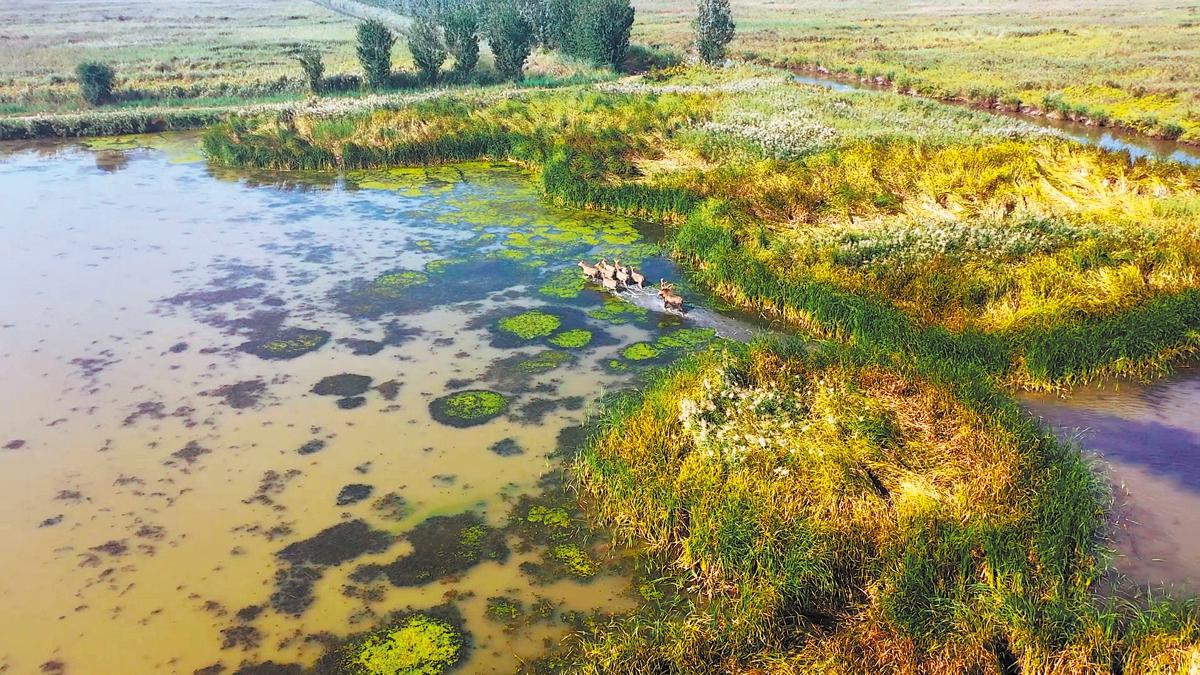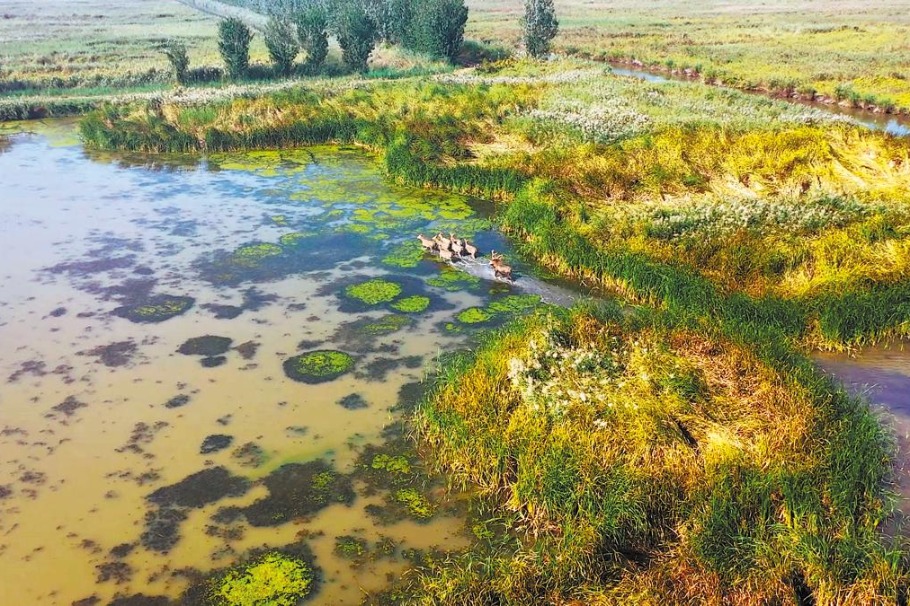Milu deer adapt to new home in Tianjin
Conservation drive attracts species to return and thrive in Qilihai Wetland


To revive this rare species and restore the ecological balance of the coastal wetlands, Ninghe introduced 10 milu deer from Beijing Milu Park in 2011. Since then, the ecosystem in Ninghe has supported their reproduction, increasing the population to 34.
Last year, two additional milu deer were introduced from Jiangsu.
"Qilihai Wetland provides an ideal environment for milu deer, offering abundant food sources such as reeds, cattail roots and aquatic plants," said Yu Zenghui, a government adviser to the administrative committee of Qilihai.
"With the expansion of the population and genetic diversity, the herd is expected to become stronger and more resilient, with at least 10 new births projected annually," he said.
Xie Shengbin, director of the milu research institute at Dafeng Milu Deer National Nature Reserve, said, "We carefully selected robust individuals from a population of nearly 1,000, ensuring they are in good physical condition and ready to adapt to their new surroundings."
To facilitate long-term monitoring, five of the deer have been equipped with satellite tracking collars to track their behaviors.























